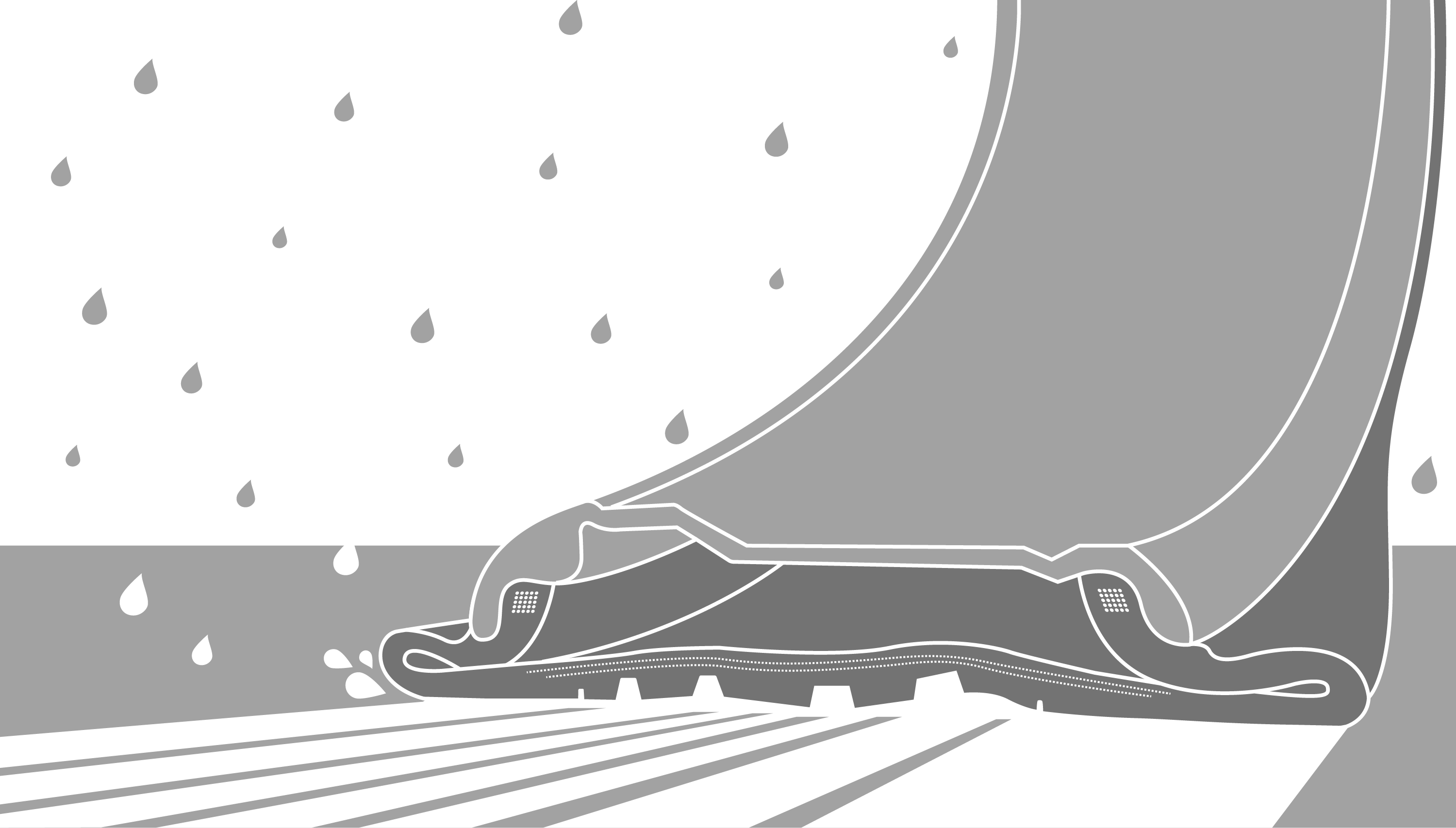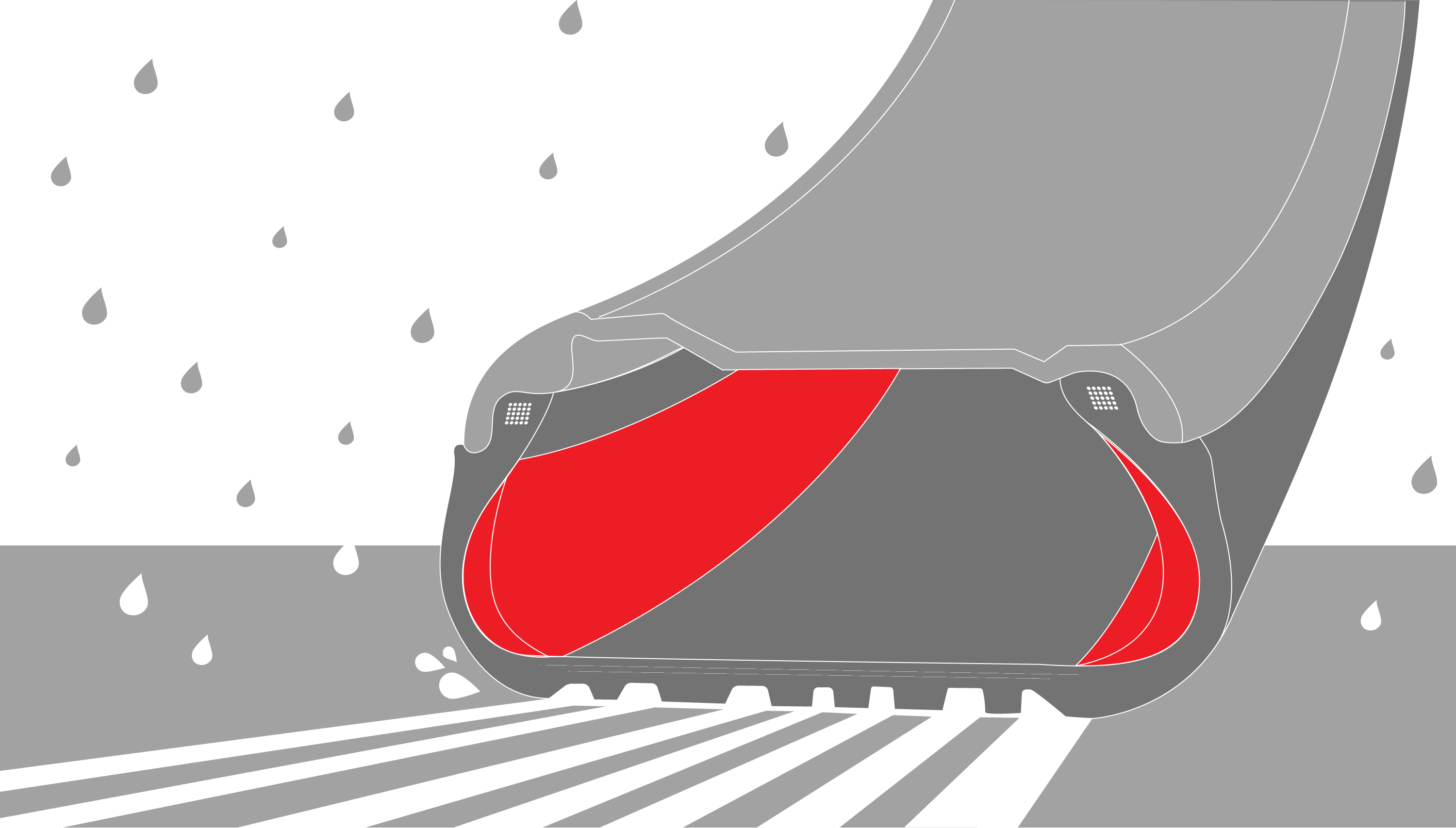Fortunately, punctures are quite rare. However, it a tyre does let you down, your mobility is severely limited and a safe onward journey cannot be guaranteed. This is because there is a risk of the sidewall being pinched between the road and wheel rim as soon as a conventional tyre begins to lose air. In the worst case, the tyre could then burst. As a minimum intervention, however, it is necessary to fit the spare wheel. Continuing the journey is not an option. On the other hand, run-flat tyres – also known as run-on-flat or self-supporting tyres – allow drivers to deal with a puncture more safely and without any stress.
What are run-flat tyres? How do run-flat tyres work?
Run-flat tyres are self-supporting tyres that make it unnecessary to carry a spare wheel and jack. In contrast to conventional tyres, run-flat tyres are characterised by a self-supporting, reinforced sidewall that can support the tyre in the event of pressure loss (e.g. a puncture). If the tyre is punctured, this design prevents the sidewall from being squashed between the road surface and the wheel rim.


- Run-flat – what does that mean?
Run-flat tyres, sometimes also known as run-on-flat or self-supporting tyres, have a reinforced sidewall. Their design makes it unnecessary to keep a spare wheel and jack in the boot in the event of a puncture.
- How can I identify run-flat tyres? Where can this information be found?
Run-flat tyres can be identified by the letter ‘F’ on the sidewall. Tyres marked with this character have previously demonstrated under test conditions that they are suitable for road use following a puncture. The ‘F’ is included in the sidewall lettering before the rim diameter, for example: 205/55 RF 16.
- Who can fit run-flat tyres?
Specialist dealers can fit and remove run-flat tyres. They should be trained and certified in the correct handling of run-flat tyres.
Fortunately, punctures are quite rare. However, it a tyre does let you down, your mobility is severely limited and a safe onward journey cannot be guaranteed. This is because there is a risk of the sidewall being pinched between the road and wheel rim as soon as a conventional tyre begins to lose air. In the worst case, the tyre could then burst. As a minimum intervention, however, it is necessary to fit the spare wheel. Continuing the journey is not an option. On the other hand, run-flat tyres – also known as run-on-flat or self-supporting tyres – allow drivers to deal with a puncture more safely and without any stress.
Why should I choose run-flat tyres? Advantages of run-flat tyres
Run-flat tyres make it possible to continue driving despite a puncture and to maintain control of the vehicle. At a reduced speed of up to 50 mph, it is still possible to travel up to 50 miles (80 kilometres) after a puncture. This means you can travel immediately to the nearest garage following a puncture. There is no need for an unwanted stop at the side of a busy road or to carry out a difficult tyre change. Similarly, cumbersome wheel changes on the roadside, possibly in the rain or snow, are unnecessary. Furthermore, motorists do not have to transport a bulky spare wheel, freeing up storage space in the boot and reducing the overall vehicle weight.
Disadvantages of run-flat tyres
Run-flat tyres are slightly heavier than conventional tyres, weighing around 300 g more each. The initial outlay for run-flat tyres is also slightly higher than for conventional tyres. However, the purchase is especially worthwhile if run-flat tyres are fitted as standard, in which case neither a spare wheel nor a tyre repair kit are included when a vehicle leaves the factory.
Run-flat tyre marking
Run-flat tyres can be identified by the lettering on the sidewall.
Some tyres that have demonstrated under test conditions that they are suitable for road use following a puncture feature the letter ‘F’ before the nominal rim diameter, for example: 205/55 RF 16. Additionally, a symbol resembling a snail is placed on the sidewall. Some manufacturers, in turn, use just their own terminology to mark their runflat tyres.
The majority of manufacturers have their own terminology for run-flat tyres, and the most common abbreviations for these are: RFT, CSR, DSST, HRS, EMT, ROF, SST, ZP and XRP.
Run-flat tyres from Uniroyal and Continental are called SSR tyres. The abbreviation SSR stands for ‘self-supporting run-flat’ tyres.
The background to this labelling system is a supplement to ECE Regulation 30 (ECE-R 30), which came into force on 19 January 2006 to regulate the marking and testing of self-supporting tyres.
Self-supporting run-flat (SSR) tyres from Uniroyal
Run-flat tyres from Uniroyal are called self-supporting run-flat tyres, or SSR tyres for short. There are eight sizes of tyre with run-flat technology in the Uniroyal RainSport 3 SSR summer tyre range.
Technical requirements for run-flat tyres
As a general rule, vehicles should only be fitted with run-flat tyres or SSR tyres if intended by the vehicle manufacturer. In addition, the use of run-flat tyres requires vehicles to have a tyre pressure monitoring system (TPMS). This is necessary because drivers using SSR tyres will not immediately notice a puncture or pressure loss. When using run-flat tyres, it is also recommended to have an electronic stability programme (ESP) on board the vehicle.
Fitting run-flat tyres
Run-flat tyres can be fitted on standard H2 rims. At the same time, it is important to observe any vehicle-specific recommendations by the manufacturer. Vehicles should be fitted with either run-flat tyres or standard tyres. It is not recommended to have different tyre types fitted at the same time, not even if each axle has only one type.
For safety reasons, Uniroyal recommends not repairing or reusing tyres that are defective or that have already been driven with a puncture. Dealers who fit and remove run-flat tyres should be trained and certified in the correct handling of these tyres.